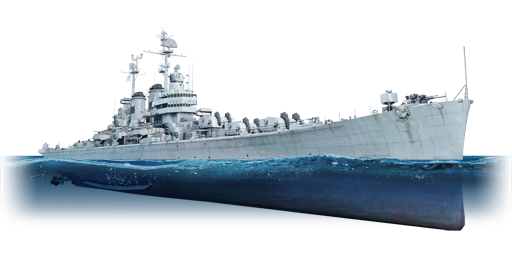The Worcester-class light cruisers are the final class of "gun cruiser" built for the United States Navy, being laid down just a few months before the end of World War II. The class was, in concept, built as a distinctive hybrid between the Cleveland-class and Atlanta/Juneau-class light cruiser, featuring twelve 6-inch guns mounted in six twin turrets arranged in linear configuration. Each 6-inch gun was intended to be dual-purpose, and as such they were housed inside a turret with high elevation and firing angles to engage air targets, not dissimilar with the 5-inch dual-purpose guns onboard the Cleveland and Atlanta. However, with the advent of guided anti-ship and surface-to-air missile, the Worcester-class, along with its heavier counterpart the Des Moines-class, were considered obsolete. Out of ten original ships ordered, only two ships; Worcester and Roanoke were completed. Neither saw any action during their relatively short 11-year career before being decommissioned in 1958.
Introduced in Update "Air Superiority", the USS Roanoke features an alternative take on the "gun cruiser" design of the Cleveland and Brooklyn, featuring twelve 6-inch guns that were capable of engaging surface and air targets. As the ship is optimized for anti-air duties using her 6-inch guns, she lacked the 5-inch dual-purpose guns that were a common feature of American cruisers, thus captains may often find her dedicated air defense to be somewhat lacklustre. Nevertheless, once the HE-VT shell options are unlocked, the Roanoke is capable of easily eliminating both ground and air targets, even at longer ranges.














